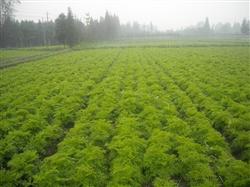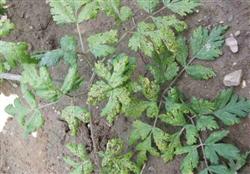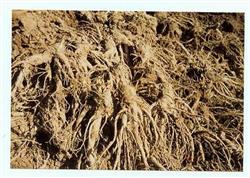How to grow Angelica efficiently?

How to plant Angelica sinensis efficiently? Please introduce the methods for efficient planting of Angelica sinensis can refer to the following planting methods: first, seed collection: wild Angelica sinensis seeds are collected and dried in the mountain during the mature season in mid-late November, and stored in a ventilated and ventilated place with cloth bags or woolen net bags. in preparation for sowing in March next year. Second, raising seedlings: choose the sunny and leeward slopes. From January to February, dig the ground, bask in the sun, burn weeds and shrubs, turn them into the soil, in order to fertilize the soil, permeate air and filter water. Before sowing in March, broken soil targets flat soil blocks, ditches to make beds, the width of the border is 1-1.2 meters, and the width of the ditch is 0.3 meters. Before sowing, the seeds were pretreated in 28 ℃ 30 min lukewarm water for 24 hours, dried and mixed with fine sand, then sowed on the seedling bed, covered with fine sand soil 1-2cm thick, and then covered with a layer of dry pine needles to prevent the seedling bed from splashing. After sowing, a thin wire was used to fix the sunshade net at 1m above the seedbed to reduce the sun exposure to the seedbed. Angelica seeds can germinate and emerge about 15 days after sowing. At this time, pine needles should be gradually removed from the seedbed, weeds should be removed, weak seedlings should be removed at the same time, strong seedlings should be cultivated, and the distance between seedlings should be about 1-1.5cm. 3. Transplanting: when the seedling height of Angelica sinensis is 20-30cm from June to July, select fallow land or second wasteland with deep soil layer, cut down weeds and shrubs, turn 25cm deeply, apply organic barnyard manure 3000kg per mu as base fertilizer, and raise ditch to make bed, border width 1.2-1.5m, ditch width 0.3m. The transplanting was carried out in overcast and rainy days with a row spacing of 20 × 30cm. Two seedlings were planted in each pond after transplanting in the pond. Fourth, field management: after transplanting seedlings survive, remove weeds in the field in time, and loose roots to cultivate soil. When the new seedlings reach 10-15cm, nitrogen, phosphorus and potassium compound fertilizer should be applied in time, and the amount of 50-80kg per mu should be applied. In order to ensure the quality and efficacy of Angelica sinensis, we should strengthen the prevention and control of diseases and insect pests and plant Chinese herbal medicines according to the national GAP standard without spraying chemical pesticides. Fifth, harvest: when the leaves of Angelica sinensis plant are withered in December, they can be dug, processed and put on the market. Generally, the annual Angelica sinensis has small roots, light color and low yield. If it is not dug, let it survive the winter naturally in the field and continue to grow for one year in the coming year, the yield can be significantly increased. Generally, the dry product Angelica sinensis can yield 250-300kg per mu. Click to get more Angelica planting technology click to get more medicinal material planting technology
- Prev

What is Angelica brown spot? How to prevent and cure?
What is Angelica brown spot? How to prevent and cure? Please introduce that the pathogen of brown spot disease of Angelica sinensis is a fungus of the genus Cercospora. Conidia orbicular, conidia linear to needle-shaped, colorless, transparent, upright or slightly curved, most apical slightly pointed, 1 Mel 3 septum. The main results are as follows: 1. the harmful symptom is harmful leaves. Send it.
- Next

How can Angelica be planted with high yield?
How can Angelica be planted with high yield? Please introduce the method of Angelica sinensis, also known as Qin Gui, Minshan Gui, Xidang Angelica, Yungui, which contains a variety of volatile oils. the main components are n-butenylacyllactone, Songben lactone, carvacrol, Angelica aromatic ketone, palmitic acid, sesquiterpene A, B and so on. The root is used as medicine, which can regulate menstruation and relieve pain, moisturize dryness and smooth intestines.
Related
- Fuxing push coffee new agricultural production and marketing class: lack of small-scale processing plants
- Jujube rice field leisure farm deep ploughing Yilan for five years to create a space for organic food and play
- Nongyu Farm-A trial of organic papaya for brave women with advanced technology
- Four points for attention in the prevention and control of diseases and insect pests of edible fungi
- How to add nutrient solution to Edible Fungi
- Is there any good way to control edible fungus mites?
- Open Inoculation Technology of Edible Fungi
- Is there any clever way to use fertilizer for edible fungus in winter?
- What agents are used to kill the pathogens of edible fungi in the mushroom shed?
- Rapid drying of Edible Fungi

